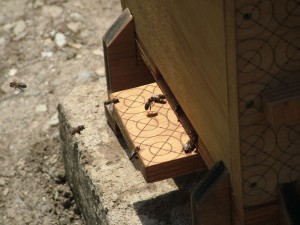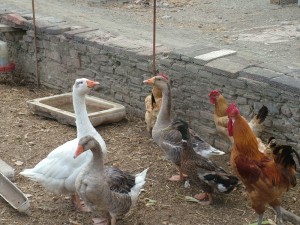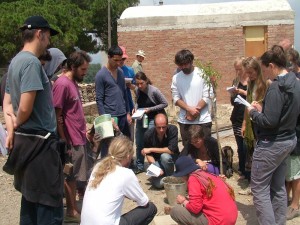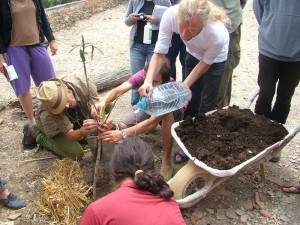Today we began with a mid-course evaluation where everyone had the opportunity to express their own opinions about the course and the organization, like transport, accommodation, length of day, teacher’s presentation…
After that we moved on to Zone 3.
In this zone is where we find the orchard where we only plant fruit and nut trees. Also, it is the area where we can establish the food forest: an integrative forest that mimics a natural forest and its seven layers, where we grow more edible species.
This Zone have 5 principles:
- maximize organic matter production
- keep the soil covered
- no till
- maintain biodiversity (no kill)
- replace more than we extract
A Food forest is:
- Based on guilds (interrelationship of fixed and mobile species).
- More successful when there is thoughtful observation and local knowledge.
- More resistant to pests than a normal orchard.
- built with mostly perennial and multifunctional plants.
Inputs (needs): water, OM, pollinators, legumes/nutrients, protection (wild animals, pests, fire).
Afterwards, we split in groups and we did a list of species according to climate (drylands, temperate and tropical), and calendar.
Rosemary told us about the management of the animals in zone 2-3.
what do they eat/need? Which are their functions? Which are they products? How much land does they need? Who will take care of them?


We took the bees as an example and we looked for:
- Needs: home, pollen, clean water, wind protection, sun, no horse, no rododendron, protection from parasites (mice…)
- Yields: honey, propolis, wax, pollen, royal jelly, divide often.
- Siting of the beehive: facing east, not in a windy place, entrance door must be 1m high for protection…
- Flowering calendar of fruit trees (major source of pollen), herbs, bulbs (early food for bees)
To do some practice Rosemary teach us how to plant in a dryland areas:
- dig big hole (a bit more than tree)
- fill hole with water
- let some water in bottom
- put compost
- layer of straw (holds water)
- moist it
- thin layer of soil
- spread bottom of tree roots: teasing them gently
- no compost on top.
- Vertical mulch of hay in direction of prevailing winds
- watering in circle shape, where roots are trying to grow
- make a boomerang shape to harvest water
- create a guild around (pumpkin, N-fixing)
- heavily mulch, without touching bark (breathing)


